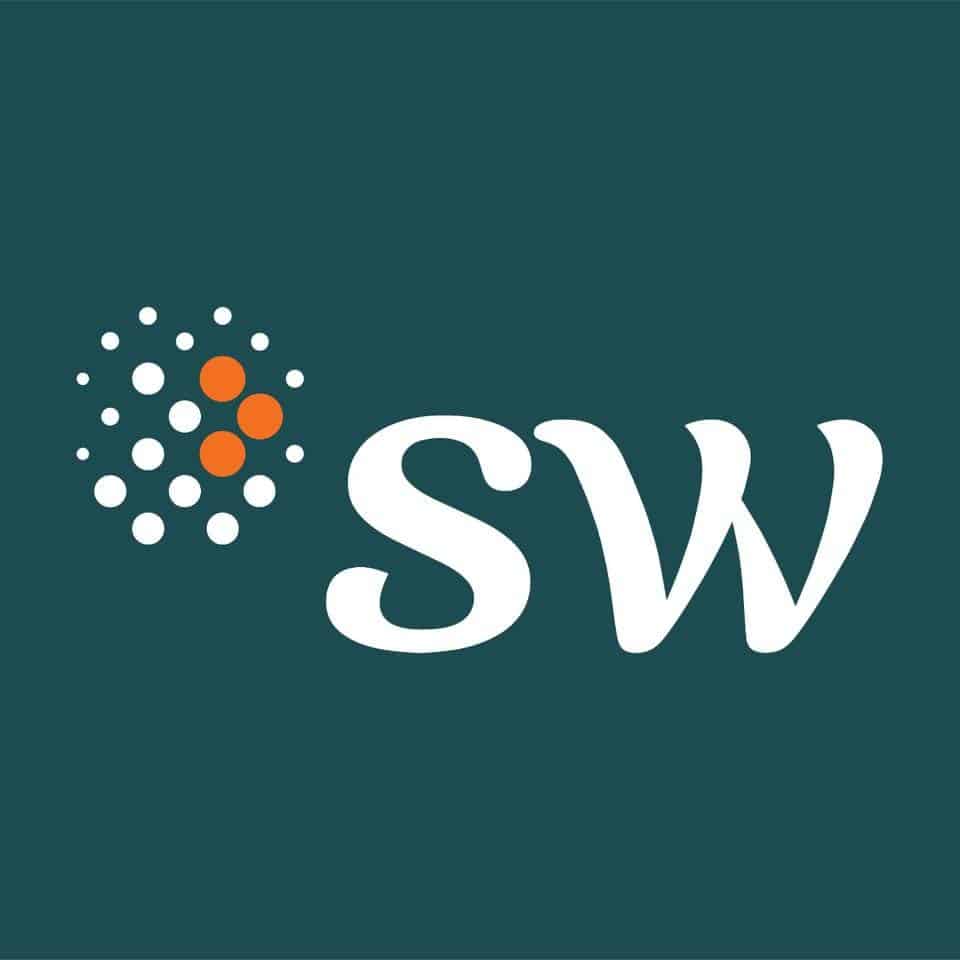Derivatives has been in existence for thousands of years, dating as early as the ancient trading in Mesopotamia to the Middle Ages in Europe where merchants negotiate for land and sea ventures. In the current digital era, derivatives have evolved into complex instruments, indexing not only through commodities, but also involve financial instruments and cryptocurrencies. At the Indonesia Stock Exchange (IDX), a new Structured Warrant (SW) has been issued, which is the newest derivative instrument.
Table of Contents
According to PSAK 71 Financial Instruments, derivatives are a financial instrument or other contract with all three of the following characteristics:
a. its value changes in response to the change in a specified interest rate, financial instrument price, commodity price, foreign exchange rate, index of prices or rates, credit rating or credit index, or other variable, provided in the case of a non-financial variable that the variable is not specific to a party to the contract (sometimes called the ‘underlying’).
b. it requires no initial net investment or an initial net investment that is smaller than would be required for other types of contracts that would be expected to have a similar response to changes in market factors.
c. it is settled at a future date.

Common Types of Derivatives
The most common example of derivatives include forward contracts, future contracts, option contracts, and swaps.
Forward contracts
Forward contracts are agreements to buy or sell an asset at a specific price on a specified date in the future. Forward contracts are considered derivatives since the contract refers to an underlying asset that will be delivered and settled at a future date. Forward contracts are used to lock in specific price to avoid volatility in pricing.
For example, Company A enters into agreement with Bank B on December 1, 2022 to purchase USD 100.000 at a price of Rp 15.600 per USD on March 31, 2023. At the maturity date, the spot rate become Rp 15.620. If Company A has not entered into forward contract, then it would have paid a total amount of Rp 1.562.000.000, higher than the contract price of Rp 1.560.000.000.
Future contracts
Future contracts are similar to forward contracts wherein parties agree to set a specific price of an underlying for delivery at a future date. However, while forward contract is a customized private agreement between the buyer and seller, future contracts is a standardized agreement that can be traded on an exchange. In Indonesia, several future contracts are traded at IDX such as IDX LQ45 Futures, Indonesia Government Bond Futures and Basket Bond Features.
Option contracts
An option contract is an agreement between two parties wherein the buyer is given a right, but not an obligation, to buy or sell an underlying at a certain date at a specified price (strike price). The two common types of options are call and put option. Under the call option, the buyer is given the right to buy the underlying at the strike price specified in the agreement; whereas for put option, the buyer is given the right to sell.
For example, suppose that Company X shares are traded at Rp 150 per share and Company Z believes that share prices would increase in value. Company Z purchased one option (equivalent to 100 shares) to purchase the shares of Company X for one month at strike price of Rp 165 per share for Rp 1 per contract. If the share prices increased to Rp 190 per share, the option would be worth Rp 25 per share since Company Z could exercise the option at Rp 165 and immediately resell it at Rp 190. However, if the share prices fall to Rp 145, the option would be worthless and Company Z would be out of the premium paid.
Swaps
A swap is a derivative contract wherein two parties agree to exchange the cash flows from two different financial instruments. Most swaps involve cash flows based on a principal amount such as loans or bonds. One cash flow is generally fixed, while the other cash flow is variable based on a benchmark interest rate, currency exchange rate or index prices.
The most common swap is an interest rate swap wherein parties exchange cash flows based on the principal amount to hedge against interest rate risk. For example, Company M and Company Q entered into a one-year interest rate swap with a nominal value of Rp 1.000.000.000. Company M offers Company Q a fixed annual rate of 5% in exchange for LIBOR rate plus 2%, since both parties believe that LIBOR would be around 3%. At the end of the year, Company M will pay Rp 50.000.000 and supposing LIBOR rate is at 3.75%, Company Q will pay Rp 57.500.000.
Measurement and Hedge Accounting for Derivatives
All derivatives under the scope of PSAK 71 are measured at fair value. Fair value changes are recognized in profit or less unless the entity has elected to apply hedge accounting by designating the derivative as a hedging instrument in an eligible hedging relationship in which some or all gains or losses may be recognised in other comprehensive income.
Hedge Accounting
A hedging relationship qualifies for hedge accounting only if all of the following criteria are met:
a. the hedging relationship consists only of eligible hedging instruments and eligible hedged items.
b. at the inception of the hedging relationship there is formal designation and documentation of the hedging relationship and the entity’s risk management objective and strategy for undertaking the hedge.
c. the hedging relationship meets all of the following hedge effectiveness requirements:
i. there is an economic relationship between the hedged item and the hedging instrument;
ii. the effect of credit risk does not dominate the value changes that result from that economic relationship; and
iii. the hedge ratio of the hedging relationship is the same as that resulting from the quantity of the hedged item that the entity actually hedges and the quantity of the hedging instrument that the entity actually uses to hedge that quantity of hedged item.
Fair Value Hedges
Fair value hedge is a hedge of the exposure to changes in fair value of a recognised asset or liability or an unrecognised firm commitment, or a component of any such item, that is attributable to a particular risk and could affect profit or loss.
The gain or loss on the hedging instrument shall be recognised in profit or loss, or in other comprehensive income if the hedging instrument hedges an equity instrument for which an entity has elected to present changes in fair value in other comprehensive income.
The hedging gain or loss on the hedged item shall adjust the carrying amount of the hedged item and be recognised in profit or loss. If the hedged item is a financial asset that is measured at fair value through other comprehensive income, the hedging gain or loss on the hedged item shall be recognised in profit or loss. However, if the hedged item is an equity instrument for which an entity has elected to present changes in fair value in other comprehensive income, those amounts shall remain in other comprehensive income.
Cash Flow Hedges
Cash flow hedge is a hedge of the exposure to variability in cash flows that is attributable to a particular risk associated with all, or a component of, a recognised asset or liability (such as all or some future interest payments on variable-rate debt) or a highly probable forecast transaction and could affect profit or loss.
As long as a cash flow hedge meets the qualifying criteria for hedge accounting, the hedging relationship shall be accounted for as follows:
a. the portion of the gain or loss on the hedging instrument that is determined to be an effective hedge shall be recognised in other comprehensive income; and
b. the ineffective portion shall be recognised in profit or loss.
Cash flow reserve is lower of the two:
- the cumulative gain or loss on the hedging instrument from inception of the hedge, and
- the cumulative change in the fair value (present value) of hedged expected future cash flows from inception of the hedge (i.e. over-hedge ineffectiveness not accumulated in OCI).
Hedges of Net Investments in Foreign Operations
Net investment in a foreign operation is the amount of the reporting entity’s interest in the net assets of that operation. Hedges of a net investment in a foreign operation, including a hedge of a monetary item that is accounted for as part of the net investment, shall be accounted for similarly to cash flow hedges.
The cumulative gain or loss on the hedging instrument relating to the effective portion of the hedge that has been accumulated in the foreign currency translation reserve shall be reclassified from equity to profit or loss as a reclassification adjustment on the disposal or partial disposal of the foreign operation.
Embedded Derivatives
Under PSAK 71, an embedded derivative is a component of a hybrid contract that also includes a non-derivative host – with the effect that some of the cash flows of the combined instrument vary in a way similar to a stand-alone derivative. An embedded derivative causes some or all of the cash flows that otherwise would be required by the contract to be modified according to a specified interest rate, financial instrument price, commodity price, foreign exchange rate, index of prices or rates, credit rating or credit index, or other variable, provided in the case of a non-financial variable that the variable is not specific to a party to the contract.
If a hybrid contract contains a host that is an asset within the scope of PSAK 71, then an entity shall apply the requirements under PSAK 71 to the entire hybrid contract.
If a hybrid contract contains a host that is not an asset within the scope of PSAK 71, then an embedded derivative shall be separated from the host and accounted for as a derivative under PSAK 71 if, and only if:
a. the economic characteristics and risks of the embedded derivative are not closely related to the economic characteristics and risks of the host;
b. a separate instrument with the same terms as the embedded derivative would meet the definition of a derivative; and
c. the hybrid contract is not measured at fair value with changes in fair value recognised in profit or loss (ie a derivative that is embedded in a financial liability at fair value through profit or loss is not separated).
Advantages and Disadvantages of Derivatives
Derivatives are a useful tool for entities and investors to leverage their position by locking prices, hedge against unfavorable movements in rates, and mitigating risks – these on top of little initial cost. However, derivatives are difficult to measure because they are based on prices of another asset. The high volatility of derivatives exposes them to potentially huge losses. Derivative includes also counterparty risks that are difficult to predict or value.
Are you looking for expert assistance in navigating the world of derivatives and implementing effective accounting strategies? Look no further! At SW Indonesia, our team of professionals specializes in providing comprehensive solutions for accounting derivatives. Whether you need guidance on measurement, hedge accounting, or optimizing your derivative investments, we have the expertise to help you succeed. Contact us today at +62 2993 2132 to unlock the full potential of accounting for derivatives and take your financial strategies to new heights.












